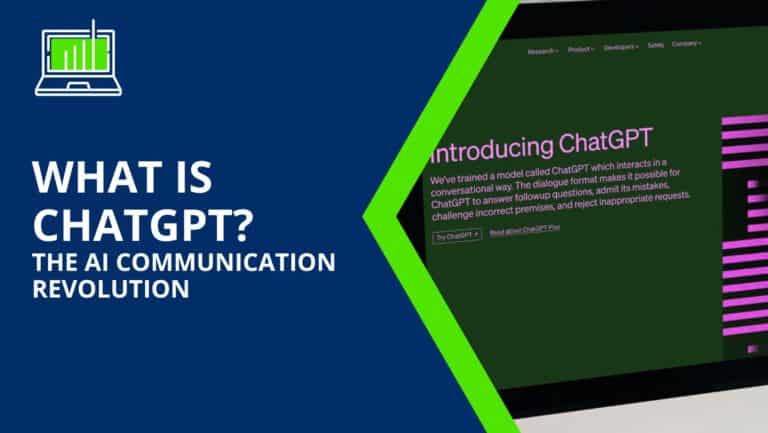Introduction to ChatGPT
In the ever-evolving landscape of artificial intelligence (AI), ChatGPT has emerged as a game-changer. But What is ChatGPT actually? As a powerful language model developed by OpenAI, it has quickly become an indispensable tool in countless industries. In this blog post, we will dive deep into the world of ChatGPT, exploring its origin, capabilities, and potential applications. By the end, you will have a comprehensive understanding of what makes ChatGPT so revolutionary and how it’s changing the way we communicate.

The Genesis of ChatGPT
The OpenAI Legacy
Before we discuss ChatGPT itself, it’s essential to understand its developer, OpenAI. Founded in 2015, OpenAI is a research organization dedicated to advancing AI technology for the betterment of humanity. The company has a strong focus on safety, ensuring that AI systems align with human values and benefit all of society. OpenAI has been at the forefront of AI breakthroughs, and ChatGPT is a prime example of their innovation.
The GPT Family
ChatGPT is part of the GPT (short for Generative Pre-trained Transformer) series, with its predecessor being the highly successful GPT-3. GPT models are known for their ability to generate human-like text, making them extremely versatile in a range of applications. The development of ChatGPT has involved extensive training on vast amounts of text data, enabling it to understand context and generate meaningful responses in a conversation.
The Inner Workings of ChatGPT
The Transformer Architecture
At the heart of ChatGPT lies the transformer architecture, which allows it to process and generate text with impressive efficiency. Transformers employ a mechanism called self-attention, which enables the model to weigh the importance of different words in a sentence. This mechanism allows ChatGPT to generate more coherent and contextually relevant responses than previous models.
Natural Language Understanding
One of the key strengths of ChatGPT is its ability to understand and process human language. By leveraging the power of machine learning, ChatGPT can interpret context, nuances, and semantics, paving the way for more effective communication between humans and AI.
Training process
The training of ChatGPT involves feeding it massive amounts of text data from diverse sources, including books, articles, and websites. This data enables the model to learn grammar, syntax, and context, as well as various facts and figures. The more data it consumes, the better it becomes at generating text.
Fine-tuning
Once the initial training is complete, ChatGPT is fine-tuned using a smaller dataset curated by human reviewers. This fine-tuning process helps the model generate more accurate and contextually relevant responses.
Applications of ChatGPT
ChatGPT’s proficiency in understanding and generating text has led to numerous applications across different industries. Some of the most notable include:
Customer service
ChatGPT has been widely adopted as a customer support tool, providing quick and accurate responses to user queries. By automating this process, businesses can save time, reduce costs, and enhance customer satisfaction.
Content generation
From drafting emails to generating engaging blog posts, ChatGPT has proven invaluable for content creators. Its natural language generation capabilities allow for the creation of high-quality, human-like text, saving time and effort for writers.
Tutoring and education
ChatGPT has the potential to revolutionize the education sector by providing personalized tutoring, answering questions, and explaining complex concepts to students.
Language Translation
ChatGPT’s impressive language understanding has opened doors for more accurate and efficient translation services, bridging the gap between speakers of different languages.
Personal Assistants
The versatility of ChatGPT makes it an ideal candidate for personal assistant applications, helping users manage their schedules, answer questions, and complete various tasks.
Limitations and challenges
Despite its numerous applications, ChatGPT is not without limitations and challenges:
Ethical concerns
AI-generated content raises questions about authenticity, misinformation, and potential misuse, necessitating guidelines and safeguards to prevent abuse.
Inaccuracies and bias
ChatGPT may generate incorrect or biased information, reflecting the biases present in the data it was trained on. Efforts are underway to address these issues in future iterations of the model.
Resource consumption
Training and running ChatGPT requires significant computational resources, contributing to environmental concerns and highlighting the need for more energy-efficient models.
Future of ChatGPT
As AI technology continues to advance, we can expect ChatGPT and similar models to become even more powerful and versatile. Researchers are working to improve accuracy, reduce biases, and minimize resource consumption. With these improvements, ChatGPT will likely play an increasingly prominent role in various industries, from healthcare to entertainment.
Conclusion
ChatGPT is a groundbreaking language model developed by OpenAI that has transformed the way we interact with AI and utilize natural language processing. Its applications span numerous industries, offering valuable benefits and efficiencies. However, it also comes with limitations and challenges that need to be addressed. As AI technology advances, we can expect ChatGPT to evolve, offering even greater possibilities and shaping the future of AI-driven language understanding.
What is ChatGPT?
ChatGPT is an advanced language model developed by OpenAI that generates human-like text based on input it receives.
How does ChatGPT work?
ChatGPT is trained on massive amounts of text data and then fine-tuned using a smaller, curated dataset to generate accurate and contextually relevant responses.
What are some applications of ChatGPT?
ChatGPT has numerous applications, including customer service, content generation, tutoring and education, and language translation.
What are some limitations and challenges of ChatGPT?
Limitations and challenges include ethical concerns, inaccuracies and biases, and significant resource consumption during training and operation.
What is the future of ChatGPT?
The future of ChatGPT will likely see improvements in accuracy, reduction of biases, and minimized resource consumption, leading to more powerful and versatile applications across various industries.


